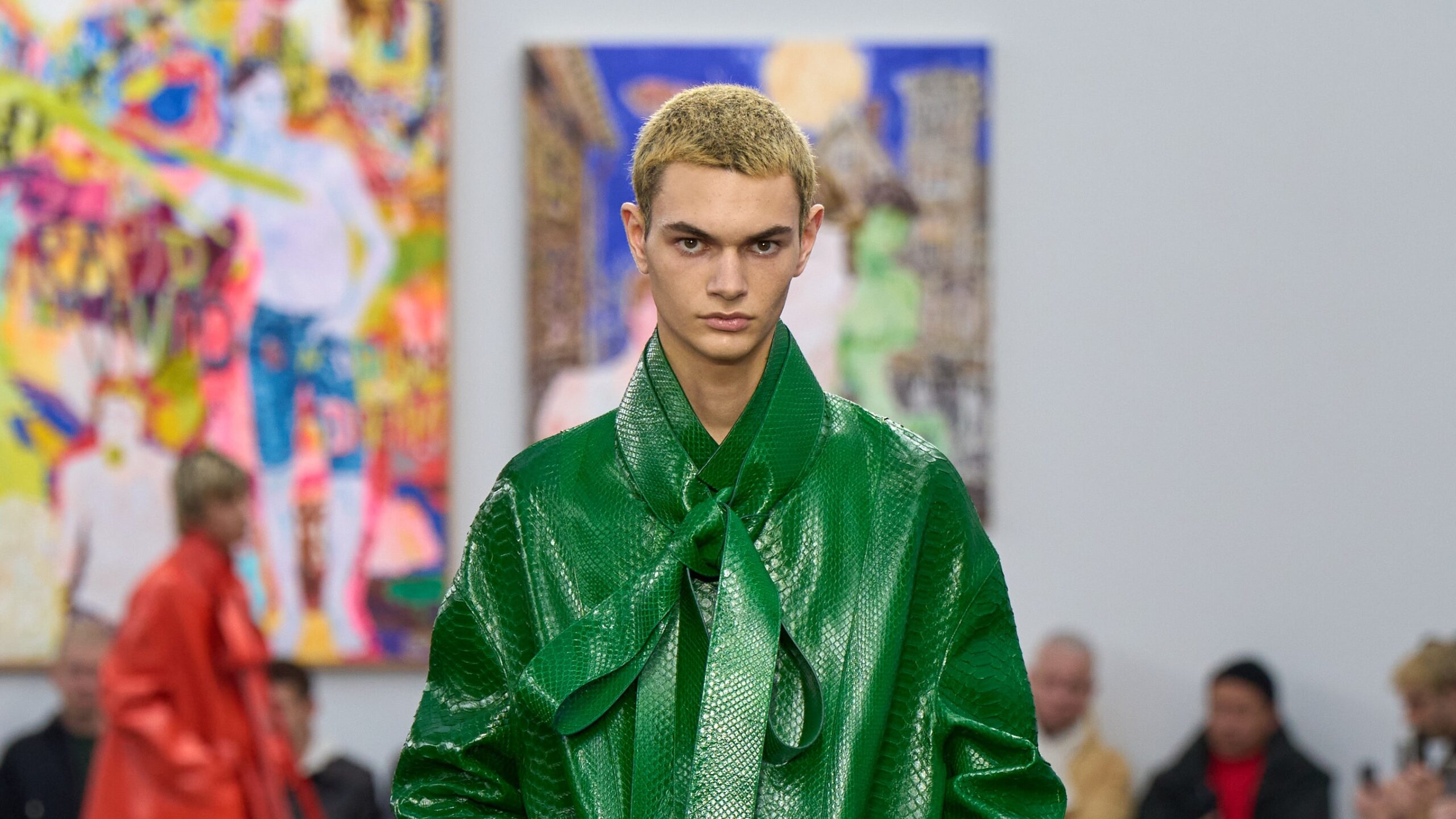Jonathan Anderson’s fall men’s Loewe show was one of those highly enjoyable immersions in the dynamic contradictions of contemporary consciousness he particularly excels at. Playful and uncomplicated and complicated and philosophical—all at the same time—it was alive with really great clothes, art content and (of course) packed with celebrities. “Collaged realness,” as a line in his press release had it.
Anderson had collaborated with the American artist Richard Hawkins, whose layered paintings of young men—shirts off—are drawn from pop culture, art history and porn. Some of his paintings were at one end of the room, while twelve arched video installations—like stained glass windows—played self-portrait footage shot by a variety of Loewe’s male ambassadors and friends, Josh O’Connor, Jamie Dornan, Taeyong, Obongjayar and Omar Apollo among them.
Anderson was reckoning with the ubiquity of social media and what it does to souse our brains with information and desire: the “algorithm of masculinity,” as he put it. “It’s 360 degrees—you can’t get away from media.” The stuff that we see everywhere all of the time “sort of levels everything out,” he said. “I think it’s sort of like looking at it as what it is, kind of going ‘I’m gonna reinterpret it—the norms.’ But by using trickery.”
Trickery! Where did that come in? The parade of boys was wearing precisely what Anderson does best—his erotically-charged super-luxurious Loewe leather, shearling and suede, chunky, crafty home-knitting, elaborate one-off art pieces and the best-in-class plain basics (jeans, shirts, sweatpants)—all the elements that make Loewe a shopping hot-spot.
The genius is in the styling equations, the visual isolation and proportions of items walking around among the naked torsos and bare legs “Gestural” (as Anderson has put it before) ideas are an unmistakable part of his knack for capturing and characterizing real life dressing habits.This season, it was the blatant suggestiveness of unbuckled half-belts; coats with piles of T-shirts caught inside (“as if a teenager’s just rolled out of bed with the laundry inside,”) and the fact that some of the garments—as he said afterwards—were actually fused together. “It’s sort of like the shoe attaching to the sock, the sock to the trouser, or the jacket to the trouser. So it becomes a one-piece thing,” he explained. “I wanted to have fun with it.”
You couldn’t see that (the trickery), but you got the sense of haste, maybe a touch of neo-grunge, couldn’t-care-lessness, and yet, of course, it was all styled camera ready for a street style moment. There was more information on the soundtrack—bursts of interviews about Sean Penn and Justin Bieber, and a blast of a Western movie score. “It was a lot about heroes and bad boys. And a lot about America. How The American Dream kind of became a global dream somehow,” Anderson concluded. “Though now, in a weird way, it’s not about countries anymore. It’s about the internet. We are just the internet.”
